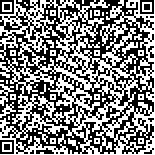| 摘要: |
| [摘要] 目的 观察成人骨性Ⅱ类错(牙合)患者行拔牙掩饰性矫治后软硬组织、牙体长轴的变化。方法 选取2002—2019年在广西壮族自治区人民医院采用拔除四颗前磨牙完成掩饰性矫治治疗的成人骨性Ⅱ类错(牙合)患者24例,比较其治疗前后的SNA角、SNB角、ANB角、FMA角、SN-MP角、U1-NA角、U1-NA距、U1-SN角、L1-NB角、L1-NB距、L1-MP角、U1-L1角、Ls-E线距、Li-E线距和Z角等15项头影测量参数,并与正常(牙合)的正常参考值进行比较。分析L1-NB距的变化量与其余14项参数的变化量的相关性。结果 与治疗前比较,患者治疗后的SNA角、SNB角、U1-NA角、UI-NA距、U1-SN角、L1-NB距、Ls-E线距和Li-E线距减小,SN-MP角、U1-L1角和Z角增大,差异有统计学意义(P<0.05)。治疗前患者的SNB角、U1-L1角和Z角较正常参考值小,ANB角、SN-MP角、L1-NB距、L1-MP角、Ls-E线距和Li-E线距较正常参考值大,差异有统计学意义(P<0.05)。治疗后患者的SNB角、U1-NA角、UI-NA距、U1-SN角和Z角较正常参考值小,ANB角、SN-MP角、L1-MP角、U1-L1角和Ls-E线距较正常参考值大,差异有统计学意义(P<0.05)。患者治疗前后△L1-NB距与△U1-NA角、△U1-NA距、△U1-SN角、△Ls-E线距、△Li-E线距、△L1-NB角、△L1-MP角呈正相关(P<0.05),与△U1-L1角、△Z角呈负相关(P<0.05)。结论 成人骨性Ⅱ类错(牙合)拔牙矫治后上下唇软组织、下前牙牙体长轴均较治疗前改善,上前牙牙体长轴较正常略舌倾,硬组织改善不明显。下前牙的内收量影响上下颌前牙的唇倾度及后移量、上下唇的突度。 |
| 关键词: 成人 骨性Ⅱ类错(牙合) 拔牙 掩饰性矫治 颌骨不调 极限 |
| DOI:10.3969/j.issn.1674-3806.2022.07.15 |
| 分类号:R 783.5 |
| 基金项目:广西卫生健康委科研项目(编号:Z20190356) |
|
| Observation on the changes of dentognathic construction in adult skeletal class Ⅱ malocclusion patients with extracted camouflage fixed treatment |
|
WANG Ling, HUANG Min-fang, RAO Ming-cong, et al.
|
|
Department of Orthodontics, the People′s Hospital of Guangxi Zhuang Autonomous Region, Nanning 530021, China
|
| Abstract: |
| [Abstract] Objective To observe the changes of soft and hard tissues, long axis of teeth after extracted camouflage fixed treatment for adult skeletal class Ⅱ malocclusion patients. Methods Twenty-four adult skeletal class Ⅱ malocclusion patients who had been extracted four premolars for camouflage fixed treatment at the People′s Hospital of Guangxi Zhuang Autonomous Region during 2002 and 2019 were selected. The 15 cephalometric measurement parameters of the patients including SNA angle, SNB angle, ANB angle, FMA angle, SN-MP angle, U1-NA angle, U1-NA distance, U1-SN angle, L1-NB angle, L1-NB distance, L1-MP angle, U1-L1 angle, Ls-E line distance, Li-E line distance and Z angle were compared before and after treatment, and were compared with the normal reference values. The correlation between the variation of the L1-NB distance and the variation of the other 14 parameters was analyzed. Results Compared with those before treatment, the SNA angle, SNB angle, U1-NA angle, UI-NA distance, U1-SN angle, L1-NB distance, Ls-E line distance and Li-E line distance of the patients decreased after treatment, and the SN-MP angle, U1-L1 angle and Z angle of the patients increased after treatment, and the differences were statistically significant(P<0.05). Before treatment, the SNB angle, U1-L1 angle, and Z angle of the patients were smaller than the normal reference values, and the ANB angle, SN-MP angle, L1-NB distance, L1-MP angle, Ls-E line distance and Li-E line distance were larger than the normal reference values, and the differences were statistically significant(P<0.05). After treatment, the SNB angle, U1-NA angle, UI-NA distance, U1-SN angle, and Z angle of the patients were smaller than the normal reference values, and the ANB angle, SN-MP angle, L1-MP angle, U1-L1 angle and Ls-E line distance were larger than the normal reference values, and the differences were statistically significant(P<0.05). Before and after treatment, the △L1-NB distance was positively correlated with the △U1-NA angle, △U1-NA distance, △U1-SN angle, △Ls-E line distance, △Li-E line distance, △L1-NB angle and △L1-MP angle(P<0.05), and was negatively correlated with the △U1-L1 angle and △Z angle(P<0.05). Conclusion Compared with those before treatment, the upper and lower lip soft tissues and the long axis of the lower incisor are improved, and the long axis of the upper incisor is slightly retroclined than normal, but the improvement of hard tissues is not significant after the extracted camouflage fixed treatment for adult skeletal class Ⅱ malocclusion. The adduction of the upper incisor affects the lip inclination and backward displacement of anterior teeth of the upper and lower jaws, and the protrusion of upper and lower lips. |
| Key words: Adult Skeletal class Ⅱ malocclusion Tooth extraction Camouflage fixed treatment Discrepancy of upper and lower jaws Limitation |

